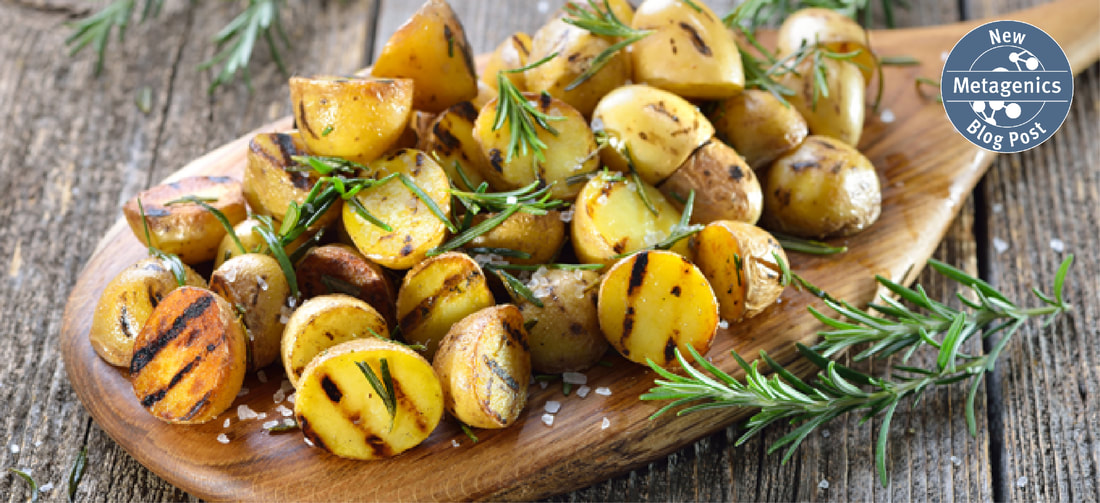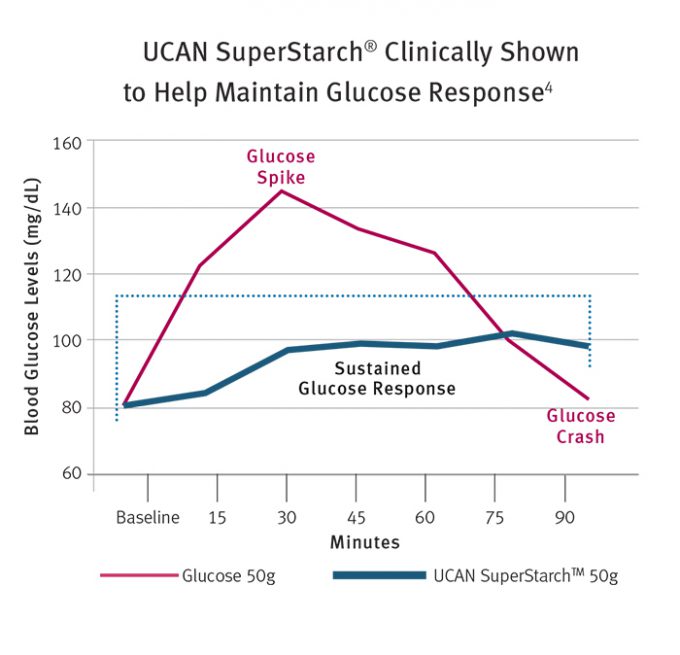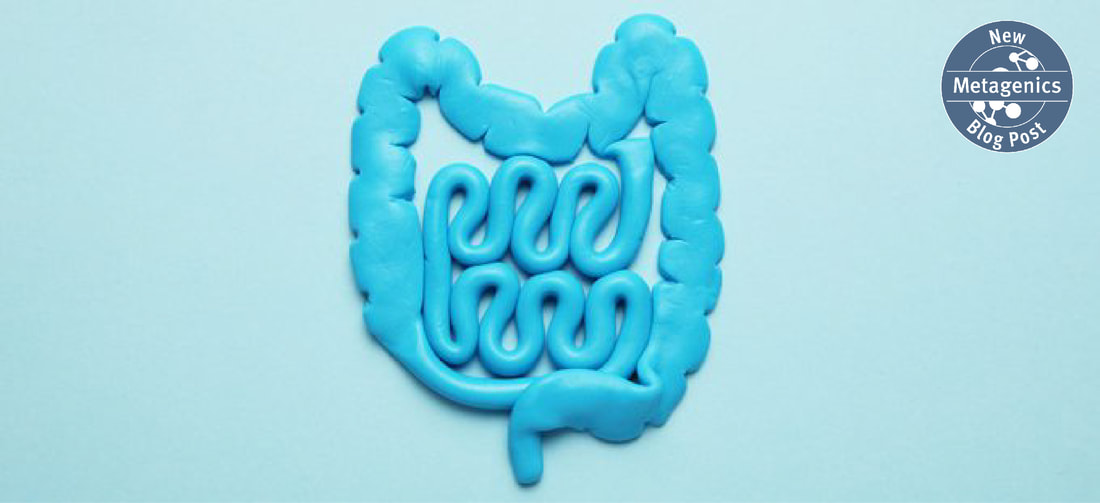|
In the face of varying marketing messages, shopping for a probiotic can be overwhelming. Some companies champion products with high CFU (colony-forming units, which is the measurement of groups of living microorganisms observed under the microscope), while others showcase products with dozens of strains. With more product options than ever, it is important to know what to look for when selecting a probiotic.
So what is a probiotic? Scientists define a probiotic as the following: “Live microorganisms that, when administered in adequate amounts, confer a health benefit on the host.”1,2 Based on that definition, how do you find the probiotic you need? Here is a checklist of six things to look for: Personalization—What health benefits do you need?
Science—Clinically studied to demonstrate health benefits
Identity—Genus, species, and strain
Amounts matter—Billions are not always better
Alive through expiration
Manufacturing quality/testing for contaminants and purity
Submitted by the Metagenics Marketing Team
0 Comments
Did you know your body can contain up to ten times more bacteria than it does human cells?
Probiotics are living microorganisms that can have beneficial effects on the microbiome and on many aspects of the human body; their use has become quite widespread in the last several years. But as is common among topics that rapidly rise in popularity, misinformation is easily spread as some companies may prey on customers’ ignorance. We think it’s time to debunk the most common myths about probiotics so you can make informed decisions. Myth: All probiotic strains are created equal.Fact: Only a handful of probiotic strains have been clinically shown to support human health. In fact, only a few probiotic strains have been researched extensively.1 What is a “strain”? While many probiotics are listed as a genus and species (such as Lactobacillus acidophilus), each species can also have many strains, and each strain may have different effects on particular body systems.2 For example, L. rhamnosus GR-1® and L. reuteri RC-14® are two probiotic strains shown to specifically target women’s health.*3 Myth: Better-quality probiotics don’t require temperature-controlled environments.Fact: Since probiotics are living microorganisms, it makes sense that they must exist in a habitable environment. They are sensitive to heat and moisture, which can impact viability. If handled carelessly or exposed to extremely high temperatures during shipping or storage, these tiny organisms may die off and/or lose their effectiveness, which equals a lack of potency and subsequent lack of health benefits.4 How can probiotics products be protected from heat? Refrigeration is not required for probiotics, but it is often the best way to protect the viability and ensure potency over a longer period of time.4 Reputable manufacturers usually ship probiotic products with ice packs to help ensure they are protected on their journey to you. Although the ice may melt before delivery, the temperature within the package should remain well below the level at which damage to the bacteria could occur.4 Packaging of probiotics is important, as well, to maintain viability. Desiccant packets in product bottles help to reduce moisture from the environment, while the bottles themselves matter too. Look for amber glass bottles, which eliminate the risk of UV oxidation.5 Read: 6 Things to Look for in a Probiotic Myth: The higher the potency, or total numbers, of a probiotic, the better the results.Fact: As it is important to utilize well-researched probiotic strains, it’s also important to keep in mind that the research conducted is usually done based on a total number of colony-forming units (CFU) of a specific probiotic. The potency, or total number of CFU, should be based on published scientific and clinical data on specific strains that demonstrate clinical efficacy for particular health benefits.6 In other words, if a study on a specific probiotic strain indicates health benefits at a dosage of 10 billion CFU, any product touting that benefit should have exactly 10 billion CFU. Companies promoting products with a higher number, and therefore a supposed increased benefit, may not be clinically accurate or relevant. Myth: Guaranteed potency at the time of production and expiration is the same thing.Fact: While some probiotic manufacturers tout the number of CFU at the time of production, not all can guarantee that you’ll get this number when you take them. Probiotics die over time, and this loss of efficacy can increase depending on manufacturing, shipping, and storage processes.4 Only products that guarantee potency at expiration assure reliable efficacy from start to finish. This follows the Best Practices Guidelines for Probiotics from the Council for Responsible Nutrition (CRN) and the International Probiotics Association.7 Quality probiotics state a guaranteed bacterial number on the label, with instructions for the consumer on proper usage. With appropriate storage after delivery, potency ideally should be guaranteed through the date of expiration—for reliable efficacy with every use. For more information on probiotics and nutrition, please visit the Metagenics blog. References:
Submitted by the Metagenics Marketing Team Maybe you’ve heard a healthy diet can clear up skin conditions. Is this true? Read on to learn about the gut-skin connection and how a healthy gut may lead to a clearer complexion.1
Introduction to the gut: things to know, foods to eat Before we discuss the gut’s impact on healthy skin, it’s important to note that the gut microbiome contains trillions of healthy bacteria that contribute to good digestion, nutrient absorption, and overall wellbeing. It features more than 400 bacterial species, or gastrointestinal flora, that oversee these processes.1,2 Many bacteria found in the gut offer crucial metabolic and immune benefits.1 Some recent research suggests that keeping the gut healthy with certain foods and nutrients may also positively impact your skin:
To help further support a high-performing gut, also it is suggested to drink plenty of water, manage your stress levels, and exercise regularly.6,8 Can a healthy gut clear acne? Acne affects up to 50 million people in the United States. It’s the nation’s most common skin condition, and if left untreated, it can contribute to emotional distress.9 Regardless of whether or not you suffer from breakouts, your skin is an essential organ. Skin, in general, has an average surface area of over 21 square feet, and comprises roughly 6–10% of our body weight.10 The gut-skin axis is being studied more and more in relation to overall health. Our microbiome plays a key role in achieving what’s known as skin homeostasis, where the skin performs all its vital functions appropriately, including temperature regulation, protection, and water retention.1,11 How can you monitor your gut health? Besides a healthy diet, consider discussing comprehensive stool tests with your supervising practitioner. To dive deeper into your gut-skin axis, your practitioner may schedule a stool exam, the results of which may provide your practitioner information needed to rule out any gut health conditions. If you’re concerned your gut health may be affecting your skin, don’t hesitate to contact your healthcare practitioner for more information on the gut-skin axis or before making changes to your diet or skin care routine. This information is for educational purposes only. This content is not intended as a substitute for professional medical advice, diagnosis, or treatment. Individuals should always consult with their healthcare professional for advice on medical issues. For more information on nutrition and gut health, please visit the Metagenics blog. References
Submitted by the Metagenics Marketing Team By Noelle Patno, PhD
The common complaints of bloating and flatulence, while not immediate reasons to go to the doctor, often create discomfort both individually and socially. There may be a great deal of information about intestinal gas that is considered “common sense,” but you may be interested to learn what research studies in this area have revealed. Let’s begin! What causes intestinal gas?If you’ve ever heard someone sing to you, “Beans, beans, the musical fruit, the more you eat, the more you toot,” you’re probably already familiar with several foods that can cause gas production and flatulence. Certain foods are known to be metabolized by intestinal bacteria and generate gas.1 The gas within our digestive system consists mainly of nitrogen and oxygen. Foods composed of complex carbohydrates, including beans, and foods high in polysaccharides (particularly oligosaccharides such as inulin) tend to cause, or worsen, flatulence. When we digest these foods, gas, mainly in the form of hydrogen, methane, and carbon dioxide, is released.2 To reduce risk of excess intestinal gas, AVOID eating too much of these foods:
Typically, people pass minor amounts of gas without noticing it—gentle release of the small pockets of air that may have been swallowed and small amounts made by bacteria—it even happens during sleep; larger volumes are typically released after meals. 6 (hint: plan accordingly!). While flatulence releases intestinal gas, the problem of trapped gas found with bloating, according to the medical community, is actually a problem of gas dynamics.3 Bloating—a problem of trapped gas, not excess gasA recent analysis by computed tomography (CT) scans has identified that the average intestinal gas volume, about 200 ml, does not differ in those patients with gastrointestinal diseases accompanied by obvious symptoms (e.g., inflammatory bowel disease or IBD) from those whose symptoms are not externally validated (e.g., irritable bowel syndrome or IBS).7 Research has shown that in people who complain of abdominal pain, and sometimes have an increased waist circumference, when objectively measured, are shown to have only about 28-118% (about 2 to 8 ounces) more gas in their intestines.3 The researchers concluded that the amount of just 1.9 to 8 oz. more gas wasn’t enough to create the problem of bloating but that the distribution of the gas was cause of the problem.3 Theories on the causes of bloating include:3
This content is not intended as a substitute for professional medical advice, diagnosis, or treatment. Individuals should always consult with their healthcare professional for advice on medical issues. References:
By Molly Knudsen, MS, RDN Some things never change: The kids go back to school in the fall, the leaves change color shortly after, the holiday season approaches with increasing speed every year, and the cold or flu always seems to hit a household when the holiday season is happening. We know from experience that the common cold and flu hit the hardest when the weather gets the chilliest, but why is that? And can probiotics really help support your immune health so you can enjoy the holidays approaching? Are the seasons actually connected to health? According to science, it turns out that there are three main ways that the seasons may influence health. Environmental factors: One of the main predictors of disease rates across the globe is temperature.1 For example, evidence shows that both the northern and southern hemispheres have higher rates of seasonal respiratory viruses during their respective winter months.1 In addition, lower humidity levels (so dryer climates) are also associated with higher rates of these viruses.1 Humidity is believed to influence a virus’ stability and its ability to pass the infection on.1 Although these trends of virus prevalence are well-observed, more research is needed in this area as to why. Gene expression: Studies have found that 94 DNA transcripts, the basis for gene expression, show seasonal variability.2 This variability was found in transcripts involved with immune function.2 If the gene expression for immune function isn’t functioning optimally, that person may be more susceptible to these seasonal conditions. Human behavior: Cold weather usually changes people’s routines. As temperatures drop, people are likely to spend more time indoors and in confined areas, so viruses can spread easily by contact. Because people are inside more often and the sun is shining less, vitamin D levels tend to drop in the winter.1 Vitamin D is also believed to play a role in the immune response.1 How can you use nutrition as a tool to support your immune system this season?Common colds are so common that, on average, adults usally experience two to three per year, and kids often contract more, making colds the main culprit for missed days of work and school.3 Maintaining proper immune system function is especially important during this time. There are many simple habits you can start today to help keep the cold and flu at bay. Key vitamins and probiotics may also play a role in maintaining immune health. The age-old remedy of drinking orange juice for immune health may actually hold some validity. Oranges are high in vitamin C, and this vitamin has been shown to be a powerful antioxidant that contributes to the body’s immunity.4 Not getting enough vitamin C can impair immunity and weaken your body’s immune defense.4 Foods that are high in vitamin C include guavas, red bell peppers, tomatoes, and the ever-popular orange juice. Vitamin D also plays an important role in immune function. Vitamin D receptors are expressed on various immune cells and can modulate immune response.5 It is common for vitamin D levels to drop in the winter months, and oftentimes people may not even be aware if they are deficient in this nutrient.1 Low vitamin D levels are also associated with impaired immune function.5 Foods that contain vitamin D include fortified dairy products and plant-based dairy alternatives, fatty fish like salmon, and eggs. Some orange juices are also fortified with vitamin D. A staggering 70% of the immune system is located in the gut, and one not-so-intuitive habit to maintain your immune health, in addition to getting adequate amounts of these key vitamins, is to consider probiotics.6 Research shows that the probiotic strains Lactobacillus acidophilus NCFM and Bifidobacterium lactis Bi-07 may help support immune function.7
These are the potential modes of action for how certain probiotics may support the immune response:8
References
Unless you follow a ketogenic diet, chances are your diet is high in carbohydrates. Most of these carbohydrates consist of starches, which are composed of long glucose chains. While regular starch is quickly digested and absorbed into the body, resistant starch is not as readily absorbed.1 In other words, it resists digestion. Hence, the term “resistant starch.” Resistant starches often function like prebiotics or soluble fiber. Foods composed of resistant starches move undigested through the stomach and small intestine to the colon, where gut bacteria can feed on them and convert a portion of them into beneficial short-chain fatty acids, such as butyrate.2-4 What’s so super about slow-release carbohydrates? Digestion benefits aren’t the only reason to take a closer look at resistant starches. Resistant starches have been shown to have numerous health benefits. For example, similar to soluble fiber, resistant starch consumption can have a “second-meal” effect by increasing the feeling of satiety, thus potentially helping people eat fewer calories.5-7 Adding foods high in resistant starches may also lead to improved insulin sensitivity.8 Some research suggests it may improve postprandial blood sugar levels9,10 A recent study compared the effects on blood sugar levels, over 90 minutes, with a proprietary resistant starch, known as UCAN SuperStarch® versus an oral glucose drink. The data indicated the oral glucose showed the typical “sugar spike” followed by a drop in blood glucose levels. On the other hand, the UCAN SuperStarch® provided a sustained glucose response without the sharp spike or crash in blood sugar.11 Resistant starch sources
Looking to ingest more resistant starch? It’s easy to get ample amounts of resistant starch through dietary intake. Foods high in resistant starch include potatoes (except sweet potatoes), green bananas, legumes, cashews, and some grains, including whole grains, oats, and rice.12,13 Note that some people find a diet high in resistant starch may cause stomach discomfort. Cook and cool! After cooking rice and potatoes (although not sweet potatoes), simply wait to eat these items until they have cooled completely. Cooling is important, as it converts some of the starch into resistant starch, allowing it to pass unchanged through the intestinal tract and providing fuel for the “friendly” bacteria in the colon. As always, make sure to discuss any dietary changes with your healthcare practitioner first! References:
Submitted by the Metagenics Marketing Team Are you struggling to maintain a healthy weight?
If so, you may want to check in with your gut. Research has shown that our gut bacteria—specifically, the wrong kind of gut bacteria, or lack of microbial diversity—can hinder weight management.1 This post offers a brief overview of the gut and explains how you can improve your gut microbiome and support better weight management. Gut health: an overview Our intestines, or gut, are key to our digestive system and have been linked to many other aspects of our health, affecting everything from our cognitive wellbeing to our skin health and potentially our ability to lose weight.2 Our gut hosts 100 trillion microbes at any given time, and the majority of these microflora are good for us. That said, not all microbes provide the same health benefits.2 This is because we each have a unique composition of microbiota in our gut microbiome—consisting of various strains of bacteria, viruses, and protozoa (a group of single-celled microorganisms)—some of which have been shown to influence our weight and overall health. If our microbiota become less diverse, or if the amount of specific, beneficial microbes in the gut shifts, it may affect our health in various ways.2 What factors influence the gut microbiome? Our gut breaks down the food we eat into small particles. The smallest particles are absorbed into the blood, while the rest are eliminated from the body.3 The process of digestion that takes place in the intestines is where the impact of gut bacteria is the most significant. While the majority of these bacteria help to break down food and nutrients in the gut, some are better-equipped to facilitate digestion, and potentially help with weight management, than others.3 Put simply: If the gut has higher levels of certain types of bacteria, this could be a reason why it’s more difficult to lose weight. Some factors that can disrupt the gut microbiome and affect weight management include:4
Even the most relaxed people experience stress from time to time. Chronic stress is much more serious, however, as it can disrupt the gut microbiome, reducing the numbers of beneficial bacteria for weight management as well as affecting overall health. Strategies to improve gut health and promote weight loss Results from a study published in the Mayo Clinic Proceedings reveals that even with a strict diet and exercise program, specific activities of the gut bacteria can disrupt the microbiome and make weight loss difficult.6 This is important because currently, more than two-thirds of American adults are either overweight or at risk of being overweight.7 Healthy weight loss and management are crucial to overall health—and this is where understanding research on probiotic strains is valuable.8 In addition to a nutritious diet and regular exercise, certain strains may improve gut function. Clinical studies have shown that strains, such as Bifidobacterium lactis B420, support body weight regulation and have been shown to help control body weight and body fat.8 While certain probiotic strains may be ideal for weight management, along with a comprehensive wellness regimen, they are not a substitute for a healthful diet and active lifestyle. Please speak to your healthcare practitioner before changing your diet. References:
By Milene Brownlow, PhDAlso referred to as “gum arabic,” gum acacia is a water-soluble nondigestible carbohydrate derived from the sap of the Acacia Senegal tree, a plant native to parts of Africa, Pakistan, and India. The harvested gum is dried and crushed into a fine powder, rich in complex polysaccharides (carbohydrate with several sugar molecules bound together), highly soluble in water, and primarily indigestible to both humans and animals. Consequently, the ingested acacia is not broken down in the small intestine but fermented by the resident microorganisms in the colon.1 We all know the importance of a healthy gut. How happy are you with a tummy ache or when plagued by constipation/diarrhea or any other variation of a bothered digestive system? The connection between gut health and mood has been strengthened by findings of how specific bacteria strains can regulate not only body weight and composition2 but also influence brain health and contribute to neurological applications.3 Acacia has recently gained the attention of the research and medical communities due to several of its health-promoting benefits, such as: 1. Metabolic health Ingestion of soluble fibers slow digestion and the rate at which nutrients are absorbed into the bloodstream. This could possibly help regulate blood glucose levels following meals. Data have shown that ingestion of 20 g of acacia, when consumed with glucose, resulted in lower blood glucose levels than ingesting glucose alone.4 A 2010 study investigated the metabolic effects of a drink containing gum acacia and pectin in 21 men with metabolic syndrome. After 5 weeks, subjects consuming the fiber drink displayed improved fasting glucose turnover (the rate of glucose uptake and production) despite the lack of changes in insulin sensitivity or fasting plasma glucose.5 Researchers explored the mechanism of potential blood glucose regulation in an animal study. Specifically, when mice drank water with gum acacia, the researchers observed reduced protein levels of an intestinal glucose transporter, suggesting reduced intestinal absorption of glucose. This effect was sufficient to prevent glucose-induced increases in body weight and fasting plasma glucose levels in the mice that consumed the gum acacia.6 2. Satiety and reduced caloric intake Acacia may help digestion by adding bulk and softness to stool, which in turn may promote regular, healthy bowel movements while promoting satiety, as described in a study of 10 overweight subjects who consumed a mixture of dietary fibers (including gum acacia) for four weeks.7 When healthy volunteers consumed 5 or 10 grams of gum acacia, they decreased energy intake and reported increased feelings of satiety three hours after intake.8 In another study, healthy women who consumed 30 grams of gum acacia daily for six weeks experienced a significant reduction in body mass index (0.32 points) and body fat percentage (2.2%) compared to those in the placebo group (pectin).9 3. Gut health Gum acacia has been studied for its impact on gut health as well. This nutrient has been associated with improved digestive health by increasing both the number of beneficial bacteria and the production of short chain fatty acids (SCFAs) in the gut: By acting as a prebiotic and increasing the number of beneficial bacteria: Prebiotics are defined as substrates that are selectively utilized by host microorganisms conferring a health benefit.11 A case study performed in 1986 investigated whether the daily addition of 10 grams of gum acacia in a healthy volunteer could lead to changes in the fecal microbiome. After 18 days of consuming gum acacia, the fecal sample from the volunteer had higher numbers of Bacteroides and Bifidobacterium colonies than the starting samples, suggesting adaptation to the dietary intervention and increased fermentation of the ingested gum acacia.12 Another study investigated the prebiotic efficacy of gum acacia in 54 healthy adults at several daily doses (5-40 grams) for 4 weeks. Compared with the control group (who took 10 grams of inulin which is a well-known prebiotic), the number of Bifidobacteria and Lactobacilli in stool samples was significantly higher in subjects consuming acacia versus inulin with the optimal dose being around 5-10 grams. The doses tested also resulted in fewer gastrointestinal side effects, such as gas and bloating.13 Since inulin is a well-known prebiotic and known to cause issues like gas and bloating, the finding that acacia gum performed better in both the aspect of promoting beneficial bacteria in stool while not causing as many side effects suggests that acacia may also be a strong prebiotic. By increasing production of short chain fatty acids: In addition to increasing the number of beneficial bacteria, ingesting prebiotics may result in increased production and release of SCFAs, such as butyrate.14 In vitro research using bacteria isolated from the human colon demonstrated that human colonic bacteria can rapidly utilize gum acacia.15 Considering its chemical and physical properties and the benefits reported above (and others under investigation), gum acacia is widely used as an emulsifier and stabilizer by the pharmaceutical and food industries. Because of its neutral taste and high solubility, it can easily be mixed into liquids without thickening it or adding any grittiness to its texture. Earlier this year, the US Food and Drug Administration (FDA) released an updated guidance stating that gum acacia fails to meet the definition of intrinsic and intact due to its chemical structure and processing and is not, therefore, considered a dietary fiber.17 Industry partners are currently working with researchers to demonstrate physiological benefits for acacia as a dietary fiber and seeking to provide this additional information to the FDA.18 Acacia gum may, however, be considered a functional fiber under the Institute of Medicine’s (IOM) definition as a nondigestible carbohydrate isolated or extracted from a natural plant or animal source, or manufactured or synthesized.19 While the “Is acacia a dietary fiber?” discussion continues, we can recognize that some scientific evidence exists demonstrating that gum acacia may support metabolic and digestive health among other benefits. References:
By Molly Knudsen, MS, RDN
The first thought that likely comes to mind when you hear the word “microbiome” is the gut. But the human microbiome extends far beyond the intestines. The word microbiome refers to the trillions of microorganisms including bacteria, fungi, viruses, and parasites that call the human body home.1 These little critters, especially bacteria, are mostly concentrated in the small and large intestine but also inhabit the skin.1 What is the role of the skin? The skin is the largest organ in the body and, on average, is equal to about 20 square feet.2 The skin helps regulate body temperature and water retention. Not only does it trap or release heat to help keep you warm or cool depending on the temperature outside, the nerve endings in the skin also help you feel if a surface is too hot or cold or other sensations like pressure and pain.2 But the skin’s most apparent job is to act as a barrier. It is your first line of defense, preventing germs and the sun’s ultraviolet rays from entering the body.2 Microorganisms living on the skin protect the body from invasion of more harmful bacteria or viruses.2 The skin microbiota may also communicate with T cells, which are active players in the body’s immune response, preparing them to respond to harmful organisms the skin may encounter in the future.3 What affects the skin microbiome? Birth method: Starting from birth, the skin’s microbiome is constantly developing. The skin microbiome of infants born vaginally acquires microorganisms from the mother’s birth canal, whereas babies born via cesarean section acquire the microorganisms primarily from their mother’s skin.4 Skin physiology: The type of microorganisms on the skin is also influenced by the skin’s physiology, which can be divided into three regions.4
Demographic and lifestyle factors: Everything from where you live (air quality, temperature, and humidity) to clothing choices to cosmetic usage and hygienic practices to job functions can influence the skin microbiota.5 Uncontrollable factors that can affect the skin microbiome include age and sex. For example, the skin microbiome goes through major changes during puberty as increased hormone levels may increase the amount of oil the skin produces.4 Besides the obvious, how do the skin and gut microbiomes differ? Compared to the gut, the microbiome of the skin has the greatest variability of microorganisms over time.4 Research shows skin sites with the least exposure to outside environments are the most consistent over time: the ear, nose, and groin.3 Do the gut and the skin interact?Even though the skin has its own microbiome, the gut microbiome still impacts skin health. This interaction is referred to as the gut-skin axis.1 The gut microbiome may contribute to skin homeostasis (maintaining normal skin functions) and to skin allostasis (returning the skin to normal after some type of disturbance).1 The gut may also play a role in keeping the skin free of blemishes.1 The benefits the gut exerts on the skin could be due to the gut’s role in systemic inflammation, oxidative stress, and the lipid content of tissue.1 How do you keep your skin microbiota and the gut-skin axis in check? 1. Eat a balanced diet Research shows eating plant-based foods can be beneficial in helping keep the skin clear.6 Foods like fruits, vegetables, and whole grains contain fiber and biochemical compounds like polyphenols, which are important nutrients for health and can potentially benefit the skin.6 Some of these foods are also considered prebiotics and act as a nutrient source for the good bacteria in the gut to feed on 2. Consider adding fermented foods to your diet Fermented foods like miso, kombucha, and kimchi are common foods that contain good bacteria and may contain probiotic cultures. These good bacteria support digestion, and research shows they may play a role in the gut-skin axis.5 3. Use gentle skin products The skin’s microbiome flourishes under a more acidic environment. A low pH level is a measure of acidity (0 being most acidic and a high value of 14 being most basic).7 On average, the pH of the skin’s surface is below 5.7 Topical products such as soaps, sanitizers, and moisturizes can disrupt and raise that ideal pH level of the skin. Using gentle skin products and not overdoing it on the soap can help keep the skin’s pH level where it should be. In addition, topical products containing tea polyphenols may help reduce the amount of oil produced by the skin and help support a clear complexion.8 The skin is the largest and most visible organ of the body, and keeping the skin’s microbiome and the gut’s microbiome well-nourished is important for health. These are just a few steps that you can consider adding to your daily routine to support your body’s friendly bacteria. References
By Molly Knudsen, MS, RDN
Between trying to eat a balanced diet, getting enough exercise, and sleeping a sufficient amount, is remembering to take a probiotic every day really essential for your health? Probiotic studies usually research the effects of taking probiotics daily, so occasional use isn’t likely to have the same positive health outcomes. Here are three research-backed benefits of having specific probiotic strains daily:
Are similar benefits observed when consuming fermented foods?Fermented foods may contain live microorganisms that act as probiotics. However, food manufacturers rarely disclose the genus, species, and strains of bacteria in their products. It’s important to remember daily consumption of specific probiotic strains produced the health benefits found in research. You may have to do some digging to determine if fermented foods contain clinically studied probiotic strains. What else can I do to support my gut?Discussing a well-researched probiotic with your healthcare practitioner is a great start to achieving your health goals. But there are additional steps you can take toward keeping your gut healthy and happy as well.
References
|
Categories
All
Archives
April 2024
|
|
Join Our Community
|
|
Amipro Disclaimer:
Certain persons, considered experts, may disagree with one or more of the foregoing statements, but the same are deemed, nevertheless, to be based on sound and reliable authority. No such statements shall be construed as a claim or representation as to Metagenics products, that they are offered for the diagnosis, cure, mitigation, treatment or prevention of any disease. PAIA Manual |















 RSS Feed
RSS Feed